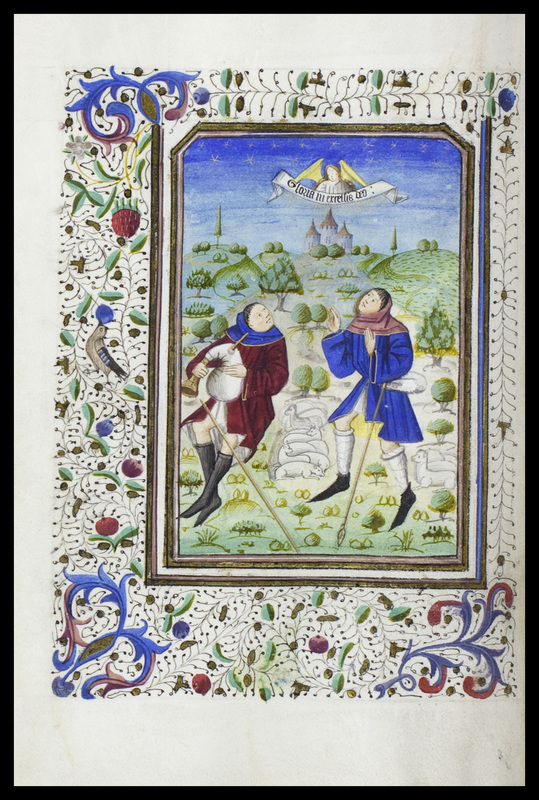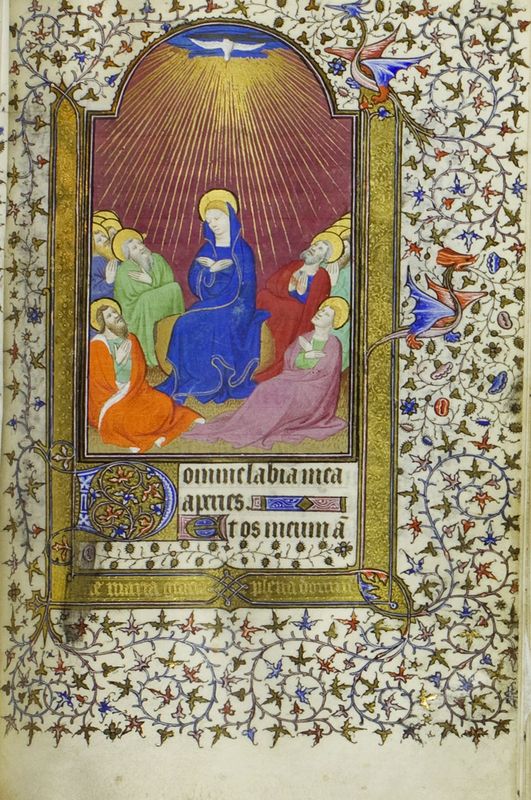![Incipiu[n]t quindeci[m] or[aci]ones scdz passio ... Incipiu[n]t quindeci[m] or[aci]ones scdz passio ...](http://omeka.wustl.edu/omeka/files/fullsize/c47e88ab6ec31f007ea4e10c659f26ad.jpg)
Incipiu[n]t quindeci[m] or[aci]ones scdz passio …
MS 4
Flemish, ca. 1480s-1490s
stylistically closer to Ghent than Bruges
19.5 cm by 13.3 cm
Root of Jesse
The Root of Jesse literally sprouts from the chest of the reposing Jesse, the father of King David. Mary stands at the top of the genealogical tree as the virgin (Latin virgo) who exemplifies the prophecy of Isaiah (playing upon the similarity of the Latin words for virgin and shoot): "a shoot (Latin virga) shall grow from the stock of Jesse" (Isaiah 11:1-3). The prophecy held that Jesse would produce a lineage that would culminate in the coming of Christ. This illumination introduces the Hours of the Virgin (see section III).
![In principio erat verbum] et verbum erat apud deum et deus erat verbum ... In principio erat verbum] et verbum erat apud deum et deus erat verbum ...](http://omeka.wustl.edu/omeka/files/fullsize/ad2155b8f440fb22475d202811d3ff81.jpg)
[In principio erat verbum] et verbum erat apud deum et deus erat verbum …
MS 8
Probably Parisian, late 15th C., could be ca. 1490s
very standard late 15th C. style, stylistically similar to work of Jean Bourdichon
17.5 cm. by 11.7 cm
St. John and Seven-headed Dragon
The evangelist John appears on Patmos with his writing implements and eagle, as usual. What differs in this illumination is the presence of the seven-headed dragon, a memorable figure vividly described in the Apocalypse (also called Revelation, 12:3-4), the text that John wrote while on Patmos.
Flight into Egypt
See Flight into Egypt, section III.
Pentecost
A very colorful depiction of Pentecost. Mary quite prominently sits in the middle; divine rays descend upon them (rather than tongues; see section VI).

![Initi[um] sancti eva[n]gely s[e]c[un]d[u]m johem ... Initi[um] sancti eva[n]gely s[e]c[un]d[u]m johem ...](http://omeka.wustl.edu/omeka/files/fullsize/00bccb27dd95255c52694511732f3a42.jpg)
